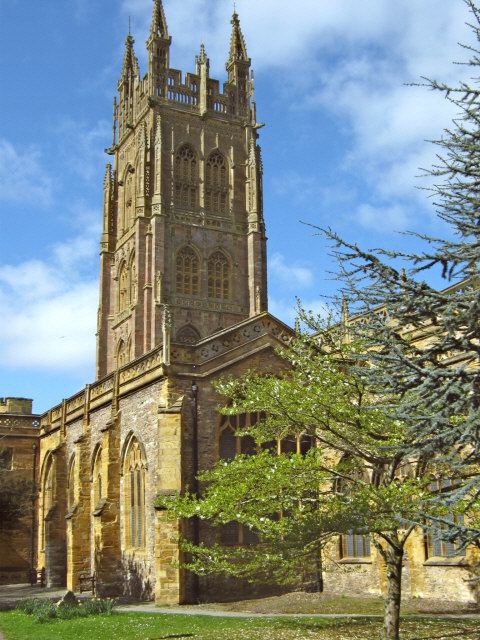Location Taunton Denomination Church of England Opened 1508 Diocese Diocese of Bath and Wells | Country United Kingdom Completed 1508 Phone +44 1823 272441 | |
 | ||
Website stmarymagdalenetaunton.org.uk Heritage designation Grade 1 Listed Building Address Church Square, Taunton TA1 1SA, UK Architectural style English Gothic architecture Similar Church of St James - Taunton, Taunton Castle, The Brewhouse Theatre, Museum of Somerset, Vivary Park | ||
The Church of St Mary Magdalene in Taunton, Somerset, England, was completed in 1508, in Early Tudor Perpendicular Gothic style and has been designated as a Grade I listed building.
History and description
St Mary's church was probably established as part of the reorganisation of Taunton by Henry of Blois, Bishop of Winchester, by 1180, and has been the town church since 1308. Prior to 1308 the church was dependent on the Augustinian Taunton Priory. A new chapel was consecrated in 1437.
It is built of sandstone and has a painted interior. Most of the statues and stained glass date from the Victorian restoration. Within the church are a variety of memorials and tablets including War Memorials for soldiers from Somerset, including the Somerset Light Infantry.
The 163 feet (50 m) tower was built around 1503, financed by the prosperity created by the wool trade, and was rebuilt in 1858-62 (in replica) by Sir George Gilbert Scott and Benjamin Ferrey, using Otter sandstone from Sir Alexander hood's quarry at Williton and some Igneous Diorite from Hestercombe. It is considered to be one of the best examples of a Somerset tower and a 163 feet (50 m) tall landmark.
The tower was described by Simon Jenkins, an acknowledged authority on English churches, as being "the noblest parish tower in England." The tower itself has 12 bells and a clock mechanism. Two of the hammers on the clock mechanism are not striking. The tower contains twelve bells hung for ringing plus three accidental (semitone) bells hung for chiming. The bells were made by Thomas Bilbie from the Bilbie family of Chew Stoke, Taylors Eayre & Smith of Loughborough, and various members of the Mears and Stainbank families of the Whitechapel Bell Foundry.
The church has suffered from the weather over the years and there have been various appeals for funding to repair the fabric of the building including one for £135,000, to repair the tower's stonework after two pinnacles fell through the roof. In 2009 vandals damaged some of the windows of the church, however the stained glass, which includes fragments from the medieval era were undamaged as they are protected by wire mesh.
Joseph Alleine the noted Puritan minister and author was curate of the church in the 1660s and is buried in the churchyard.
